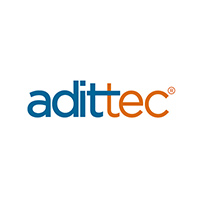Useful tips on how to write a cover letter
A cover letter is an important tool when looking for employment as it gives you the opportunity to communicate important information to the employer that is left out of your résumé. In comparison with a résumé, where you write about your career path, a cover letter is more of a presentation of your personality and attributes that are relevant to the job position, as well as the right place to express your interest in working for that specific company.
1. A personal story that draws in the reader, from start to finish
A cover letter should be relatively short, no longer that one A4 page. A good structure is to have three paragraphs, which make it easy to read, and the content should be interesting in order to draw in the readers, from start to finish. You should avoid repeating facts that you have already listed in your résumé.
The content of the letter should be personal, but written in a formal style. Try to create an emotional connection between the reader and your career story by showing your passion and dedication to your work. Your values and motivation should be the guiding principle of your story. Find a way to connect them with the activity, mission and values of the company you want to work with.
2. A short introduction is like a good title
In the first paragraph of the cover letter you should, clearly and concisely, explain who you are and what job position you are applying for. This short introduction should act as a good title - describing your key features that are advantageous to your employer and will be presented in more detail in the continuation of your “story”.
3. Practical examples prove you are the right candidate
In continuation, you should explain why you want the job position, what appealed to you the most about it, and why you believe you are the ideal candidate for this role. Before you start writing, you have to have a clear understanding of the employer’s needs and expectations. Focus on relevant experiences and skills that the employer has highlighted as key, and describe them using practical examples from your career
4. Common future goals i
You should also show your knowledge of the company, emphasise why you want to work for them, show your enthusiasm regarding the successes of the company and make sure you describe how you can contribute to achieving better results by working there.
5. Inconsistencies can be beneficial
If your résumé does not meet all the selection criteria, but you still believe that you could do an excellent job in that position, you can use your cover letter to explain more about your personality, your background and your readiness to learn new skills that would help you overcome any inconsistencies.
6. Readiness and availability for an interview
In the last part of your cover letter, thank the employer for taking their time to read your application and mention your readiness and availability for a possible interview where you will be able to discuss yourself in more detail. A positive and friendly conclusion to a letter can contribute to making a good impression on the employer.


